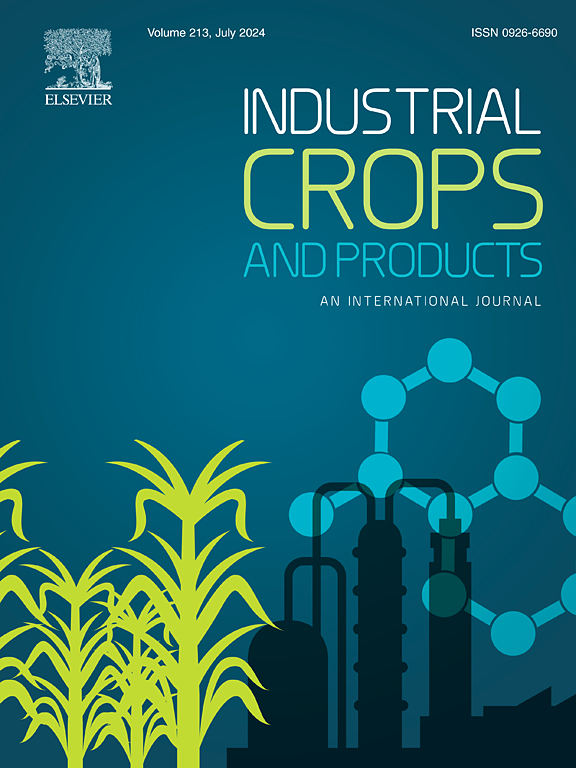Bio-based Si-N flame-retardant curing for silicone rubber modified pine: Synthesis and degradation
IF 5.6
1区 农林科学
Q1 AGRICULTURAL ENGINEERING
引用次数: 0
Abstract
We have successfully developed a molecular design strategy to synthesize a hydrogenated rosin-modified isocyanatopropyltriethoxysilane crosslinking agent (HRIS) with organic and inorganic active groups. Then curing it, rosin-based silicone rubber chemically cross-linked modified pine (RSP) is formed. This process enables the organic integration of fire-retardant silicon, nitrogen elements, and the rigid hydrogenated phenanthrene ring structure of rosin with the internal and external surfaces of the pine’s porous structure through chemical bonding. In the channels, rosin-based silicone rubber with 48.81 % of carbon, 42.96 % of oxygen, and 8.23 % of silicon, respectively was observed. The degradation mechanism coupled with LOI (limiting oxygen index) testing revealed that the RSP exhibited enhanced flame retardancy, with its LOI significantly increasing from 24.68 % to 25.4 %. Additionally, it exhibited higher thermal stability up to 330℃ than pine, indicating that the fire-retardant performance of RSP was effectively enhanced through the crosslinking modification with HRIS and PDMS (hydroxyl-terminated polydimethylsiloxane). During the thermal degradation process, RSP will produce gaseous cyclic siloxane molecules such as D3 (hexamethylcyclotrisiloxane), D4 (octamethylcyclotetrasiloxane), D5 (decamethylcyclopentasiloxane), etc. This study demonstrated that a new type of adhesive has been synthesized, but the influence of byproducts on the entire system should be considered in application, which is of significance for indicating the direction.
硅橡胶改性松木的生物基Si-N阻燃固化:合成与降解
我们成功地开发了一种具有有机和无机活性基团的氢化松香修饰异氰基丙基三乙氧基硅烷交联剂(HRIS)的分子设计策略。然后将其固化,形成松香基硅橡胶化学交联改性松(RSP)。该工艺使阻燃硅、氮元素和松香的刚性氢化菲环结构通过化学键与松木多孔结构的内外表面有机结合。在通道中,松香基硅橡胶的碳含量为48.81 %,氧含量为42.96 %,硅含量为8.23 %。结合LOI(极限氧指数)测试表明,RSP的阻燃性增强,其LOI从24.68 %显著提高到25.4 %。在330℃的高温下,RSP的热稳定性高于松木,表明RSP通过HRIS和PDMS(端羟基聚二甲基硅氧烷)的交联改性有效地提高了阻燃性能。在热降解过程中,RSP会产生气态环硅氧烷分子,如D3(六甲基环三硅氧烷)、D4(八甲基环四硅氧烷)、D5(十甲基环五硅氧烷)等。本研究表明,合成了一种新型胶粘剂,但在应用中应考虑副产物对整个体系的影响,对指明方向具有重要意义。
本文章由计算机程序翻译,如有差异,请以英文原文为准。
求助全文
约1分钟内获得全文
求助全文
来源期刊

Industrial Crops and Products
农林科学-农业工程
CiteScore
9.50
自引率
8.50%
发文量
1518
审稿时长
43 days
期刊介绍:
Industrial Crops and Products is an International Journal publishing academic and industrial research on industrial (defined as non-food/non-feed) crops and products. Papers concern both crop-oriented and bio-based materials from crops-oriented research, and should be of interest to an international audience, hypothesis driven, and where comparisons are made statistics performed.
 求助内容:
求助内容: 应助结果提醒方式:
应助结果提醒方式:


